TAIYO KOGYO MEMBRANE PAVILION
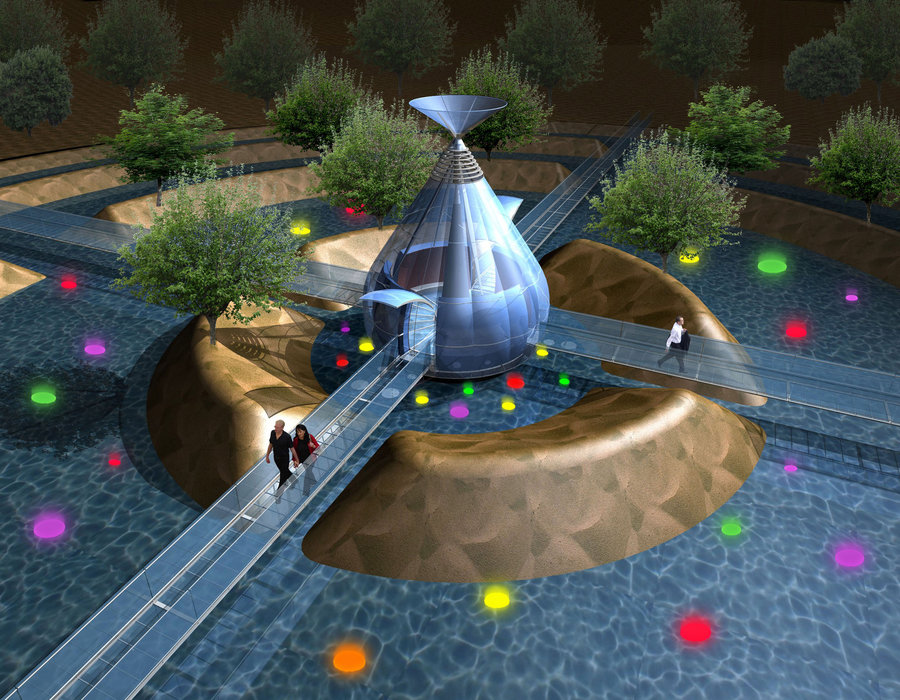
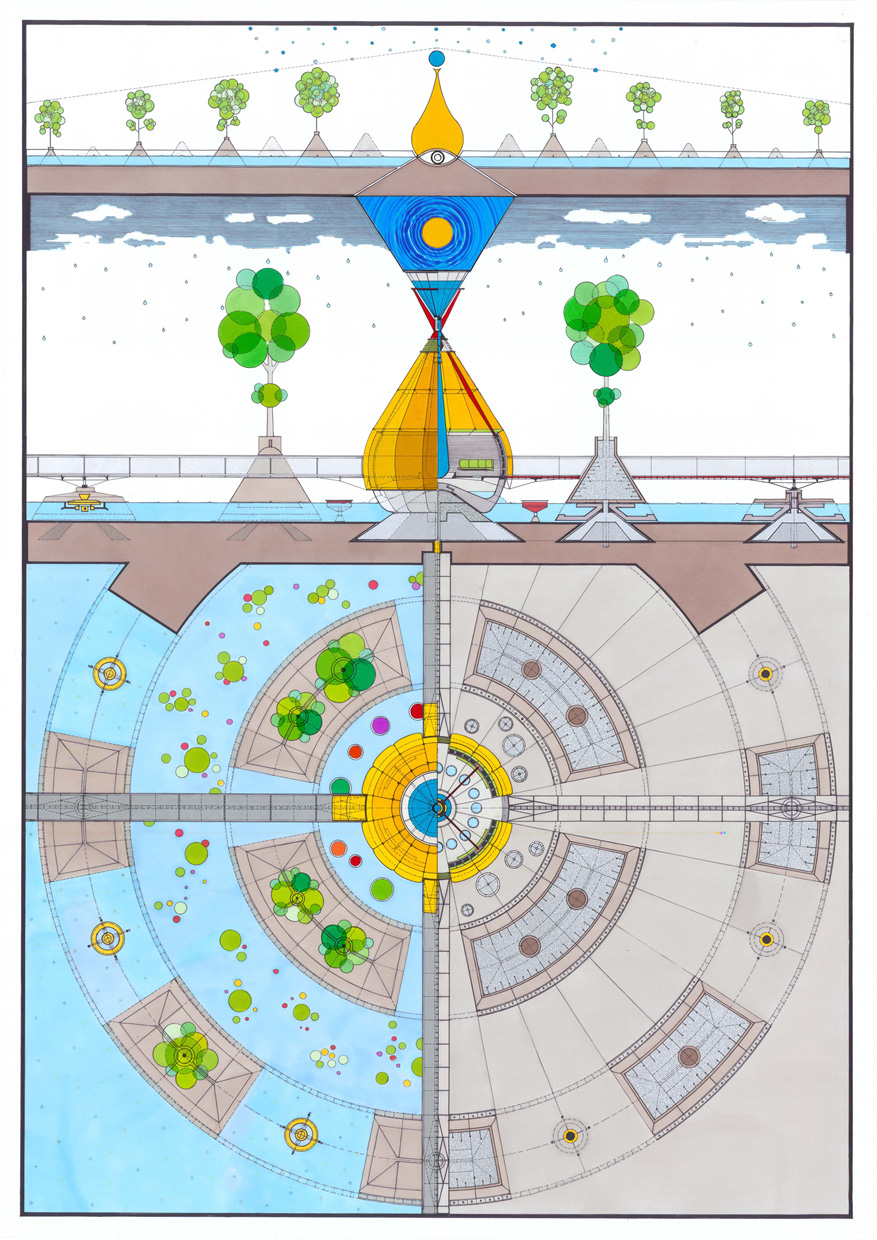
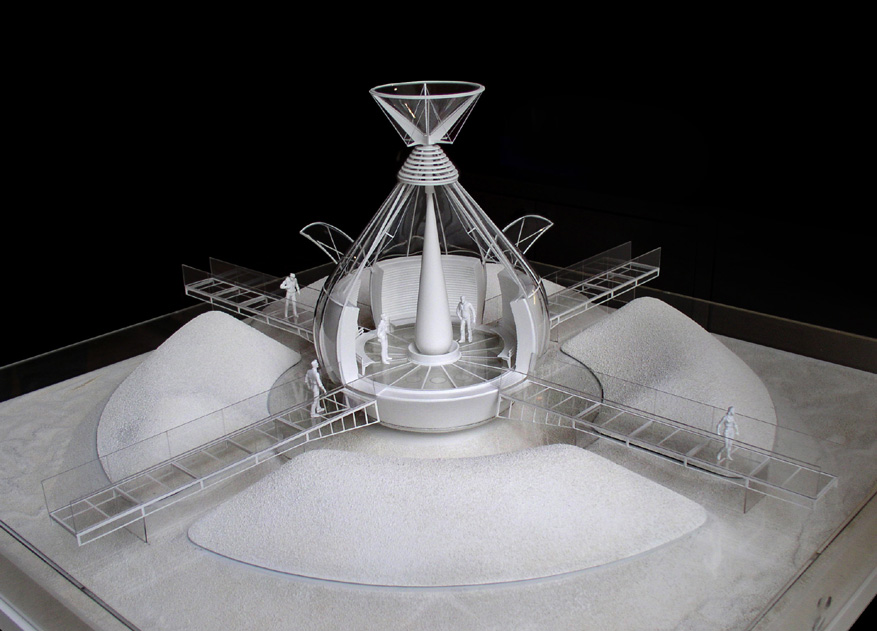

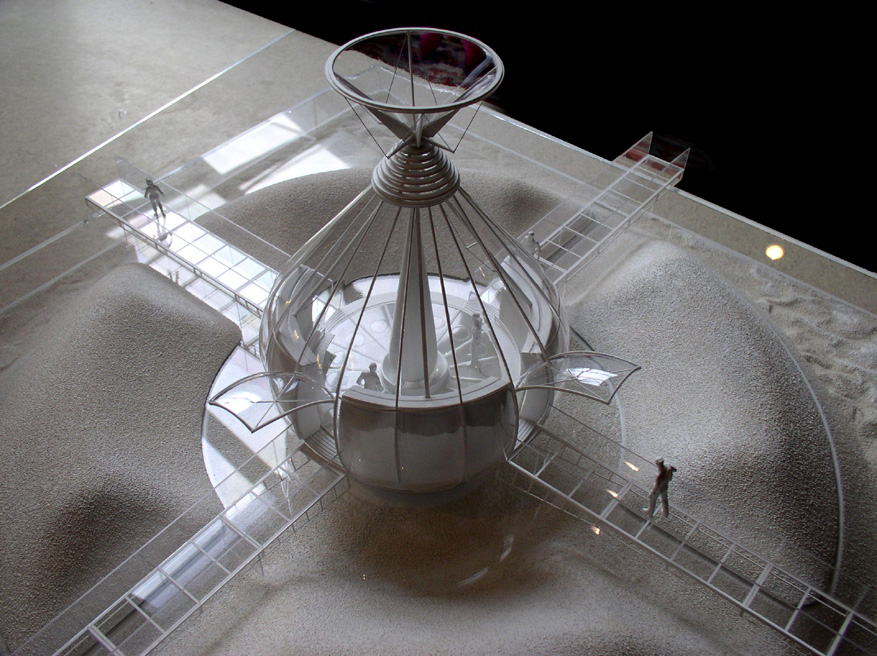
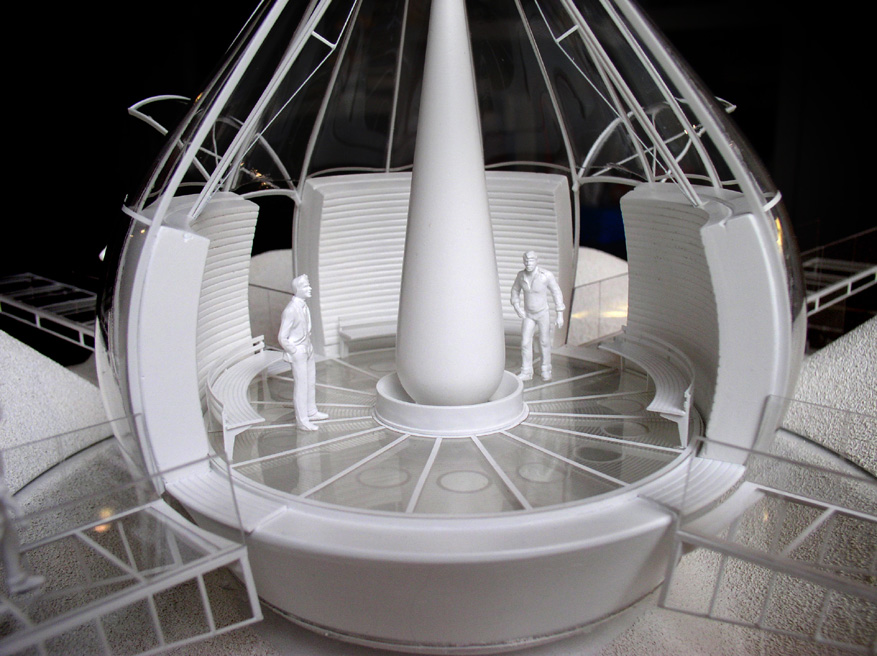
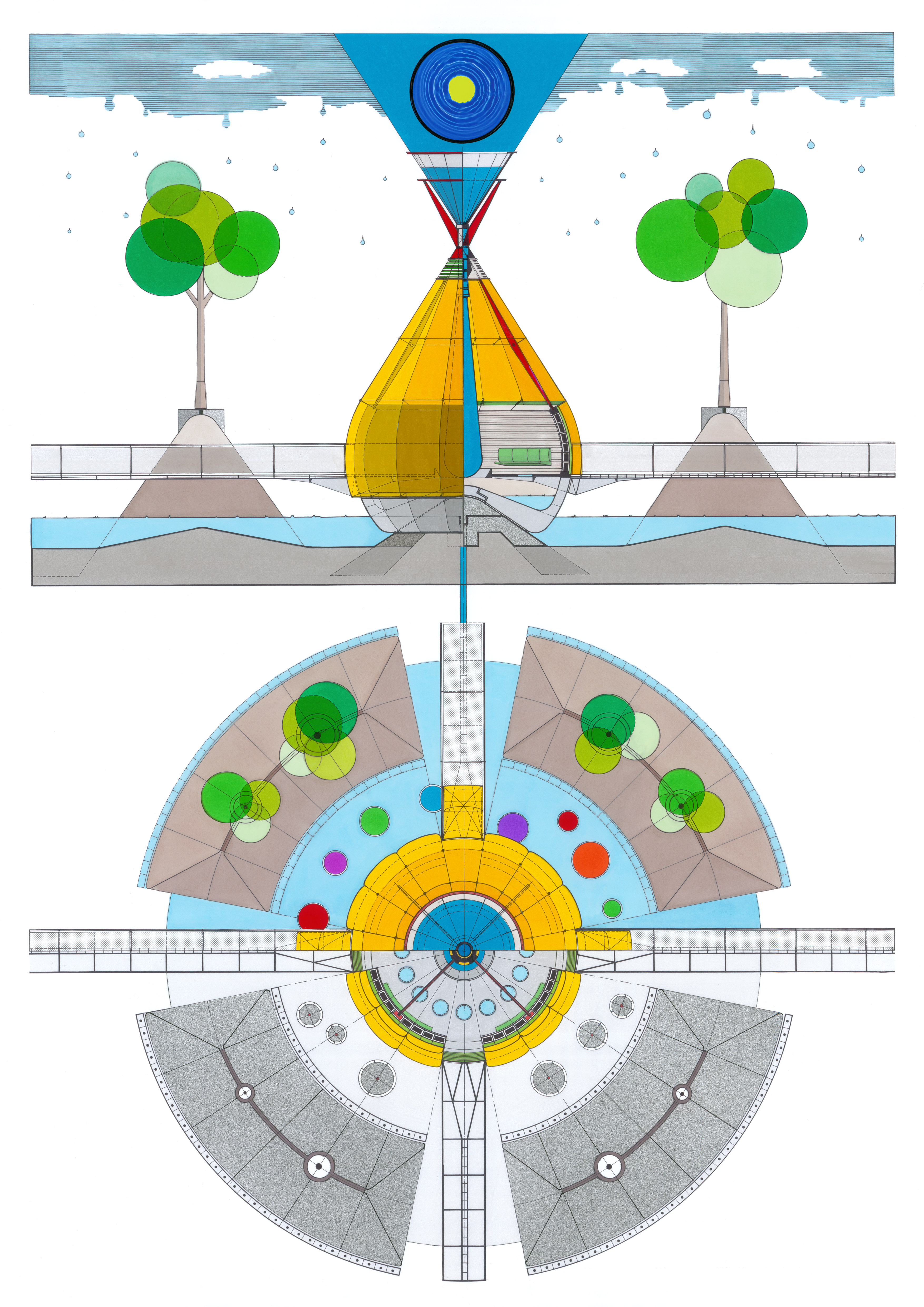
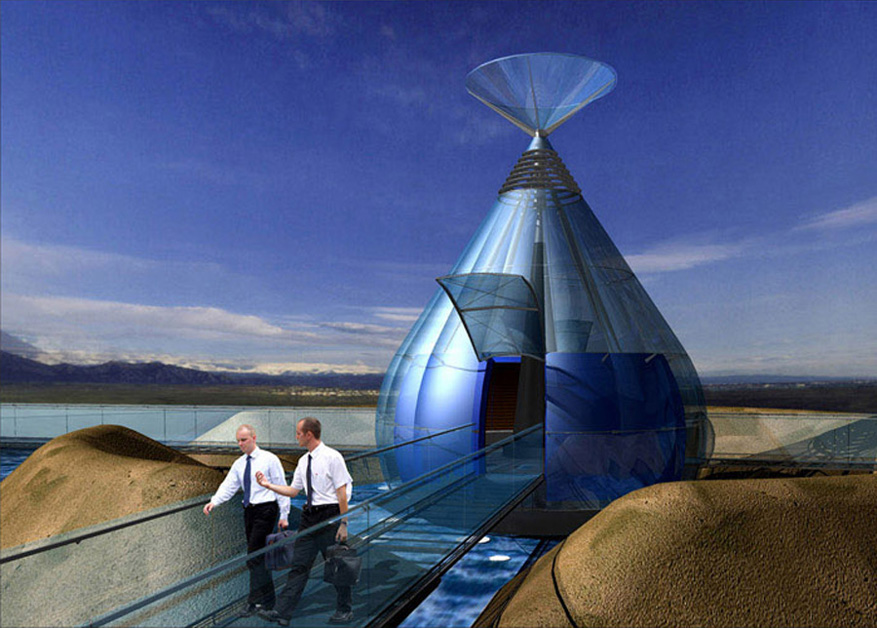
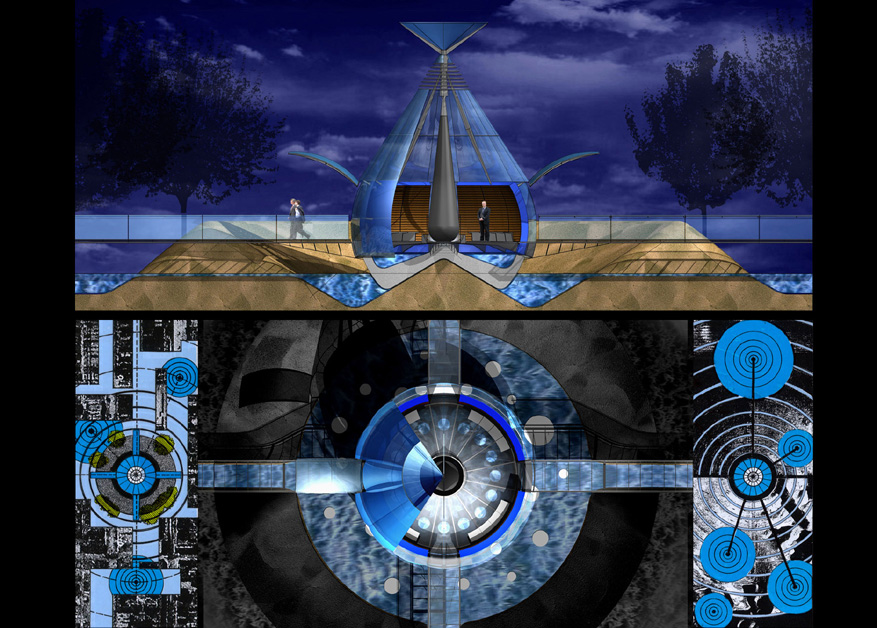
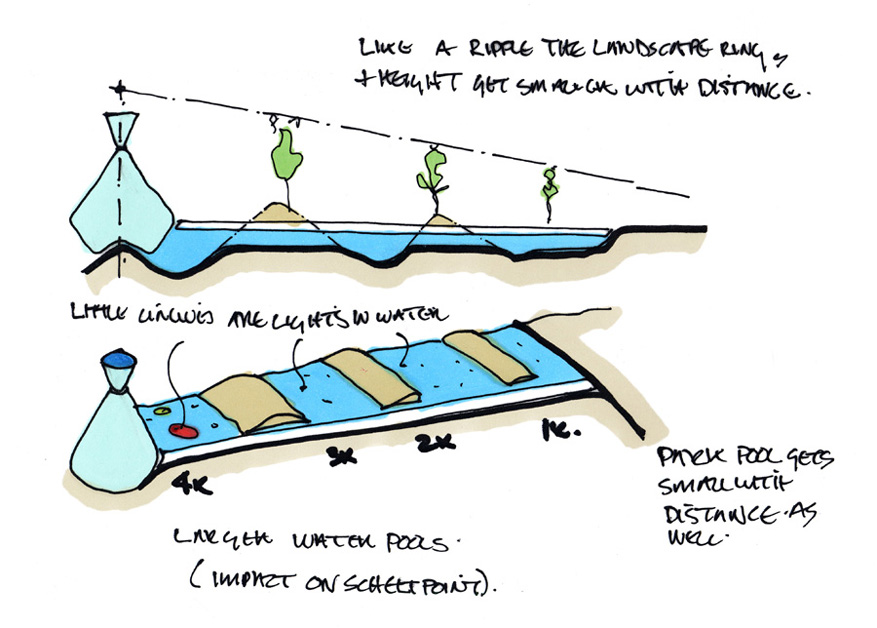
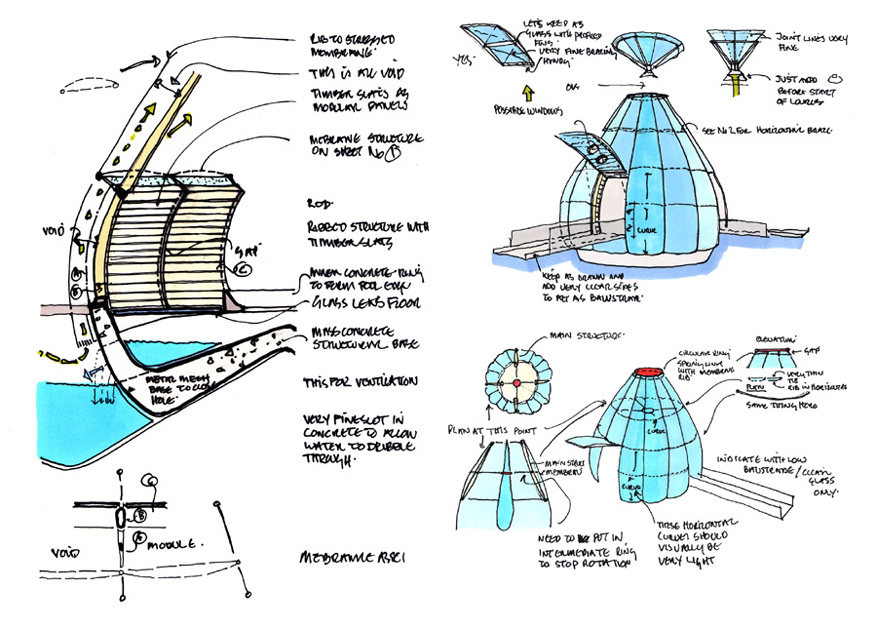
PROJECT INTRODUCTION:
The water pavilion is perceived as a series of linked beacons providing a place of rest and contemplation, a sanctuary from the hectic environment we live in refreshing visitors whilst stimulating its background. The form of the pavilion and landscape is derived from the impact of a droplet exploding on water with the ripples its makes changing as energy dissipates with distance. It is a medium that acts as a catalyst enhancing its self and its surroundings, rhythms become frozen as solid mass whilst the water between provides reflection, a sense of endless depth naturally moulding its material context. The pavilion centre is focused around a suspended water reservoir that flows downwards & outwards diminishing in size & height this being mirrored by the trees/plants exaggerated by the manner in which the paths are cut through the softer rippling groundscape.
TECHNOLOGY & CONSTRUCTION:
The central reservoir is suspended from a structural funnel manufactured from a tensile fabric that allows water to percolate through its weave to the lower pool that supplies the outer pond and landscape arteries. This transition is achieved by the pavilions base being constructed from slotted precast concrete petals. The upper enclosure consists of a stressed construction, its precedent historically based on tent design with the modern equivalents first developed a round 1950-60. The supporting structure is formed from laminated timber struts stabilised by stressed bow trusses & cables. A PTFE coated fabric forms the weather protection; a modern high performance membrane which benefits from being translucent creating an elegant, energy efficient and naturally light interior.
The pavilion is environmentally self sufficient with the cone being the ideal shape for withstanding excessive winds and shedding precipitation, whilst providing a profile that allows natural air movement from the base perimeter to the top vent; this even happens on still hot days by the sense of air movement creating a cooling effect- basis of the native North American tepee. During the day the membrane provides an even distribution of light, this reversing at night to become a light beacon. A series of landscaped features seen as lily pads and crystalline sculptures collect solar energy which is stored to power the water pumps and lighting.
I believe the project is the perfect balance between influence of nature & technology using its resources to provide a well welcomed sight and experience.
The water pavilion is perceived as a series of linked beacons providing a place of rest and contemplation, a sanctuary from the hectic environment we live in refreshing visitors whilst stimulating its background. The form of the pavilion and landscape is derived from the impact of a droplet exploding on water with the ripples its makes changing as energy dissipates with distance. It is a medium that acts as a catalyst enhancing its self and its surroundings, rhythms become frozen as solid mass whilst the water between provides reflection, a sense of endless depth naturally moulding its material context. The pavilion centre is focused around a suspended water reservoir that flows downwards & outwards diminishing in size & height this being mirrored by the trees/plants exaggerated by the manner in which the paths are cut through the softer rippling groundscape.
TECHNOLOGY & CONSTRUCTION:
The central reservoir is suspended from a structural funnel manufactured from a tensile fabric that allows water to percolate through its weave to the lower pool that supplies the outer pond and landscape arteries. This transition is achieved by the pavilions base being constructed from slotted precast concrete petals. The upper enclosure consists of a stressed construction, its precedent historically based on tent design with the modern equivalents first developed a round 1950-60. The supporting structure is formed from laminated timber struts stabilised by stressed bow trusses & cables. A PTFE coated fabric forms the weather protection; a modern high performance membrane which benefits from being translucent creating an elegant, energy efficient and naturally light interior.
The pavilion is environmentally self sufficient with the cone being the ideal shape for withstanding excessive winds and shedding precipitation, whilst providing a profile that allows natural air movement from the base perimeter to the top vent; this even happens on still hot days by the sense of air movement creating a cooling effect- basis of the native North American tepee. During the day the membrane provides an even distribution of light, this reversing at night to become a light beacon. A series of landscaped features seen as lily pads and crystalline sculptures collect solar energy which is stored to power the water pumps and lighting.
I believe the project is the perfect balance between influence of nature & technology using its resources to provide a well welcomed sight and experience.
 MAIN MENU
MAIN MENU
